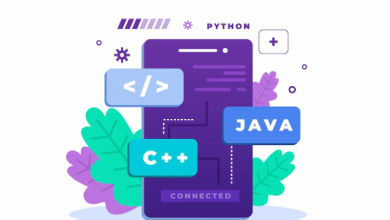8 Best Practices for Software Development

Software development is a complex and iterative process that requires careful planning and attention to detail. Whether you’re a seasoned developer or just starting out, there are certain best practices that can help you streamline your development process and create high-quality software. In this blog post, we’ll discuss five best practices that can help you become a more efficient and effective software developer.
Agile Development
Agile development is a popular software development methodology that has gained widespread adoption in recent years. Its focus on collaboration, flexibility, and rapid iteration makes it well-suited for complex and changing projects. Do not hesitate to ask the organization whether they have worked on Agile software development lifecycle. Here are some additional best practices to keep in mind when using Agile
Define clear project goals
Before beginning development, it’s important to clearly define the project goals and objectives. This will help guide the development process and ensure that everyone is working towards the same end goal.
Emphasize user feedback
Agile development places a strong emphasis on user feedback, which can help developers identify issues and make changes quickly. Regular user testing and feedback can help ensure that the software meets the needs of its intended audience.
Prioritize tasks
In an Agile environment, it’s important to prioritize tasks based on their importance and impact. This can help ensure that the most critical tasks are completed first, and that resources are being used efficiently.
Foster collaboration
Agile development relies on collaboration between team members. Regular meetings, open communication, and a shared understanding of project goals can help foster a collaborative environment.
Code Reviews
Code reviews are an essential part of the software development process. They provide an opportunity for developers to identify and correct errors and improve the quality of their code. Here are some additional tips for conducting effective code reviews:
Establish clear guidelines
Before beginning a code review, it’s important to establish clear guidelines for what the review should cover. This can include standards for code formatting, naming conventions, and overall code quality.
Focus on the code, not the person
It’s important to remember that a code review is not a personal critique of the developer. Instead, the focus should be on identifying areas for improvement in the code itself.
Provide actionable feedback
When identifying issues with the code, it’s important to provide actionable feedback that the developer can use to make improvements. This can include specific examples of where the code could be improved, or suggestions for alternative approaches.
Be constructive
When providing feedback, it’s important to be constructive and supportive. Criticizing code without providing suggestions for improvement can be demotivating for the developer.
Testing
Testing is an essential part of software development, and is critical to ensuring that the software works as intended. Developers should perform unit tests, integration tests, and functional tests to ensure that their code works as intended. Automated testing tools can help make the testing process more efficient and reliable.
Here are some additional tips for effective testing:
Test early and often
Testing should begin early in the development process and continue throughout the entire project. This can help catch issues before they become more difficult and expensive to fix.
Use automated testing tools
Automated testing tools can help make the testing process more efficient and reliable. This can include unit testing tools, integration testing tools, and functional testing tools.
Test in different environments
It’s important to test the software in different environments to ensure that it works properly under a variety of conditions. This can include testing on different operating systems, browsers, and hardware configurations.
Document test results
It’s important to document test results and track issues that are identified during the testing process. This can help ensure that all issues are properly tracked and addressed before the software is released.
Version Control
Version control is a system that allows developers to track changes to their code over time. This makes it easier to collaborate with others, rollback changes, and manage different versions of the software. Git is a popular version control system that is widely used in the software development industry.
Here are some additional tips for effective version control:
Use a centralized repository
Using a centralized repository can help ensure that all changes are properly tracked and managed. This can help prevent conflicts and ensure that the latest version of the code is always available.
Use branching and merging
Branching and merging can help make it easier to manage changes to the code over time. This can allow developers to work on different features in parallel, and merge their changes together when they are complete.
Documentation
Good documentation is an important aspect of software development. It helps to ensure that the code is understandable and maintainable over time. Here are some tips for effective documentation:
Document as you go
Documentation should be created as the code is being written. This can help ensure that the documentation is accurate and up-to-date.
Use clear and concise language
Documentation should be written in clear and concise language, and avoid technical jargon as much as possible. This can help make the code more accessible to a wider audience.
Use diagrams and examples
Diagrams and examples can be useful in explaining complex concepts and processes. They can help make the documentation more engaging and easier to understand.
Keep it up-to-date
Documentation should be kept up-to-date as the code changes over time. This can help prevent confusion and ensure that everyone is working with the most current version of the code.
Security
Security is a critical consideration in software development. It’s important to ensure that the software is protected against potential vulnerabilities and attacks. Here are some tips for ensuring security in software development:
Use secure coding practices
Developers should use secure coding practices to help prevent vulnerabilities in the code. Therefore this can include practices such as input validation, error handling, and authentication and authorization.
Keep software up-to-date
It’s important to keep the software up-to-date with the latest security patches and updates. This can help prevent vulnerabilities from being exploited.
Use encryption
Using encryption helps protect sensitive data from interception or unauthorized access by encrypting the information.
Conduct security testing
To identify potential vulnerabilities in the software, it is important to conduct security testing which includes penetration testing, vulnerability scanning, and code analysis.
Collaboration and Communication
Collaboration and communication are important aspects of software development. They help ensure that everyone is on the same page and working towards the same goals. Here are some tips for effective collaboration and communication:
Use project management tools
Project management tools can help organize tasks and keep everyone on track. This can include tools such as Trello, Asana, or Jira. You can talk to the top software development company you’re planning to hire and find out what modes of communication they use.
Regularly communicate updates
Regular communication can help keep everyone informed of progress and changes. This can include regular meetings or updates in a project management tool.
Use version control
Version control can help make it easier to collaborate on code changes. It can allow multiple developers to work on the same code without conflicts.
Foster a culture of collaboration
A culture of collaboration and teamwork can help ensure that everyone is working together towards the same goals. This can include encouraging open communication and recognizing the contributions of team members.
Continuous Integration and Deployment
Continuous integration and deployment (CI/CD) is a process that automates the build, testing, and deployment of software. This approach allows developers to deliver changes to production quickly and reliably. CI/CD tools like Jenkins and Travis CI can help streamline this process.
Conclusion
In conclusion, these best practices, developers can create high-quality software that meets the needs of their users. Agile development, code reviews, testing, version control, and CI/CD are all essential components of a successful software development process. By adopting these practices, developers can become more efficient, productive, and effective in their work.




